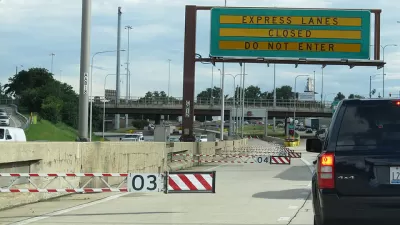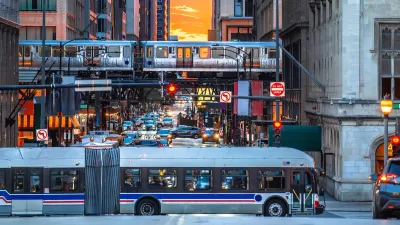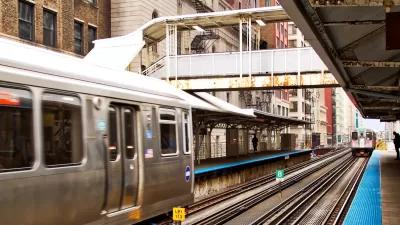Allowing buses to drive on the shoulder of highways when traffic slows has been shown to increase ridership, thus proving an important point: people will ride transit when it's a reasonable option.
Yonah Freemark provides insight into a little-known hack of the highway system to help a bus transit system operate reliably: allowing buses on the shoulder of the highway when traffic slows. Metro Transit in the Twin Cities has been using bus-on-shoulder service since 1991, expanding the routes that use the system to 300 miles of highway since then.
Freemark explains more about how bus-on-should service works and the other cities that have followed Metro Transit's example in the Twin Cities:
"The buses using highway shoulders are authorized to take advantage of those lanes when traffic is moving slower than 35 mph. When in place, the shoulder lane improves reliability and speed [pdf] of bus service, making the system more attractive. Since Metro Transit implemented the bus-on-shoulder system, regions around the country—from Seattle to the North Carolina Triangle to Washington—have implemented similar networks."
Freemark takes a closer look at the I-55 outside Chicago as a case study of bus-on-shoulder service.
Pace, the Chicago region’s suburban bus operator, introduced its own bus-on-shoulder operations in 2011 thanks to a change in Illinois state law allowing the service. The Ill. Dept. of Transportation spent $9.5 million on upgrades for I-55 on 15 miles of the highway from downtown Chicago to Plainfield, Ill., about an hour southwest of Chicago.
After ridership increased on the route, Pace has expanded service to additional routes in its system. Moreover, "Pace’s service on I-55 is performing so well that the Illinois General Assembly approved a bill last year making the original bus-on-shoulder pilot project permanent, and extended the program to make it legal on all Chicago-region expressways and tollways."
Freemark provides a lot more detail about the Pace case study, the transit benefits it achieved, and how Pace plans to expand the system in the future.
FULL STORY: Talking Transit: Bus on shoulder builds Pace ridership

Montreal Mall to Become 6,000 Housing Units
Place Versailles will be transformed into a mixed-use complex over the next 25 years.

Planetizen Federal Action Tracker
A weekly monitor of how Trump’s orders and actions are impacting planners and planning in America.

DARTSpace Platform Streamlines Dallas TOD Application Process
The Dallas transit agency hopes a shorter permitting timeline will boost transit-oriented development around rail stations.

Study: 4% of Truckers Lack a Valid Commercial License
Over 56% of inspected trucks had other violations.

Chicago Judge Orders Thousands of Accessible Ped Signals
Only 3% of the city's crossing signals are currently accessible to blind pedestrians.

Philadelphia Swaps Car Lanes for Bikeways in Unanimous Vote
The project will transform one of the handful of streets responsible for 80% of the city’s major crashes.
Urban Design for Planners 1: Software Tools
This six-course series explores essential urban design concepts using open source software and equips planners with the tools they need to participate fully in the urban design process.
Planning for Universal Design
Learn the tools for implementing Universal Design in planning regulations.
City of Mt Shasta
City of Camden Redevelopment Agency
City of Astoria
Transportation Research & Education Center (TREC) at Portland State University
US High Speed Rail Association
City of Camden Redevelopment Agency
Municipality of Princeton (NJ)





























